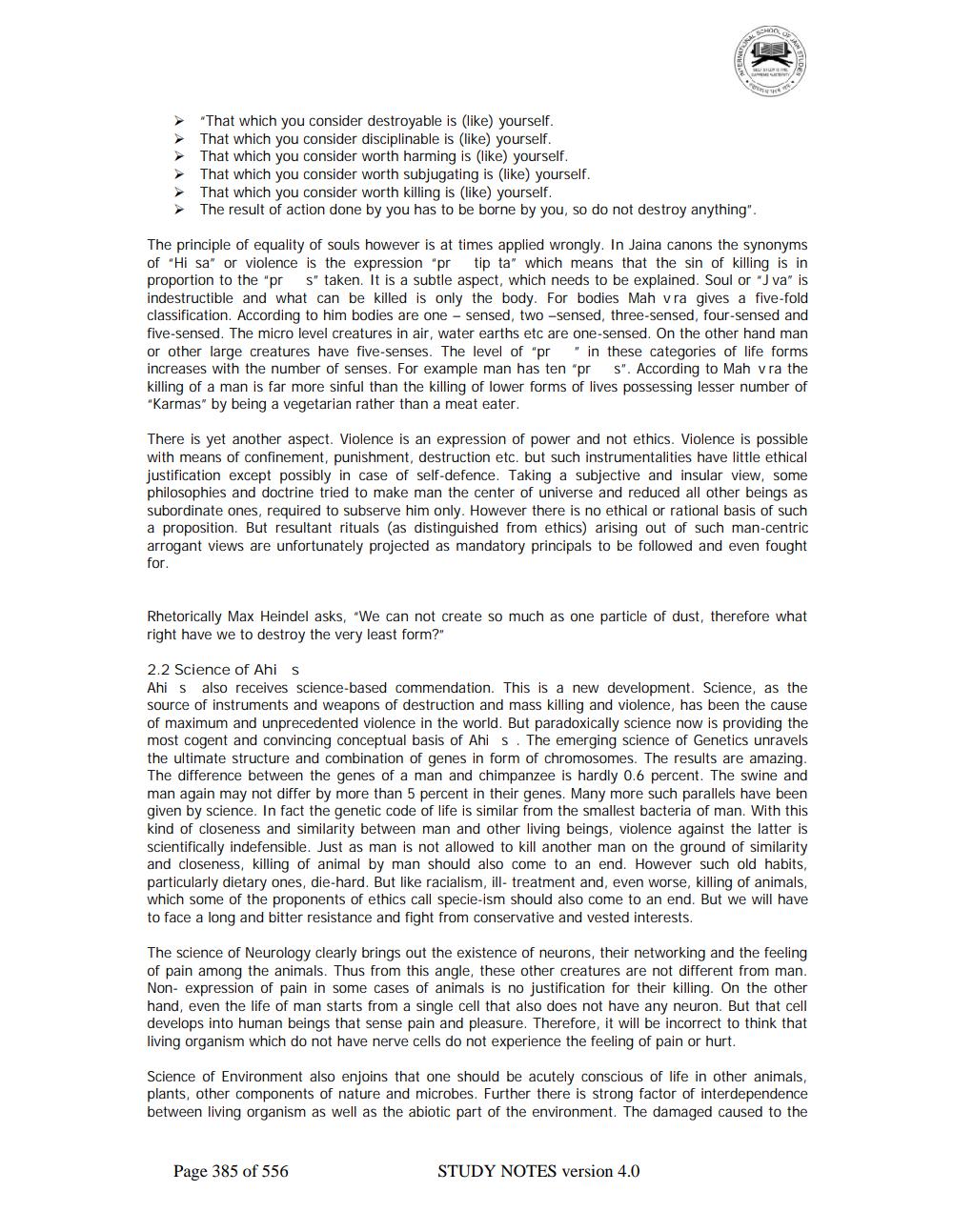________________
"That which you consider destroyable is (like) yourself. That which you consider disciplinable is (like) yourself. That which you consider worth harming is (like) yourself That which you consider worth subjugating is (like) yourself. That which you consider worth killing is (like) yourself. The result of action done by you has to be borne by you, so do not destroy anything".
►
The principle of equality of souls however is at times applied wrongly. In Jaina canons the synonyms of "Hi sa" or violence is the expression "prtip ta" which means that the sin of killing is in proportion to the "prs" taken. It is a subtle aspect, which needs to be explained. Soul or Jva" is indestructible and what can be killed is only the body. For bodies Mah vra gives a five-fold classification. According to him bodies are one - sensed, two-sensed, three-sensed, four-sensed and five-sensed. The micro level creatures in air, water earths etc are one-sensed. On the other hand man or other large creatures have five-senses. The level of "pr " in these categories of life forms increases with the number of senses. For example man has ten "prs". According to Mah vra the killing of a man is far more sinful than the killing of lower forms of lives possessing lesser number of "Karmas" by being a vegetarian rather than a meat eater.
There is yet another aspect. Violence is an expression of power and not ethics. Violence is possible with means of confinement, punishment, destruction etc. but such instrumentalities have little ethical justification except possibly in case of self-defence. Taking a subjective and insular view, some philosophies and doctrine tried to make man the center of universe and reduced all other beings as subordinate ones, required to subserve him only. However there is no ethical or rational basis of such a proposition. But resultant rituals (as distinguished from ethics) arising out of such man-centric arrogant views are unfortunately projected as mandatory principals to be followed and even fought for
Rhetorically Max Heindel asks, "We can not create so much as one particle of dust, therefore what right have we to destroy the very least form?"
2.2 Science of Ahi S Ahis also receives science-based commendation. This is a new development. Science, as the source of instruments and weapons of destruction and mass killing and violence, has been the cause of maximum and unprecedented violence in the world. But paradoxically science now is providing the most cogent and convincing conceptual basis of Ahis. The emerging science of Genetics unravels the ultimate structure and combination of genes in form of chromosomes. The results are amazing. The difference between the genes of a man and chimpanzee is hardly 0.6 percent. The swine and man again may not differ by more than 5 percent in their genes. Many more such parallels have been given by science. In fact the genetic code of life is similar from the smallest bacteria of man. With this kind of closeness and similarity between man and other living beings, violence against the latter is scientifically indefensible. Just as man is not allowed to kill another man on the ground of similarity and closeness, killing of animal by man should also come to an end. However such old habits, particularly dietary ones, die-hard. But like racialism, ill-treatment and, even worse, killing of animals, which some of the proponents of ethics call specie-ism should also come to an end. But we will have to face a long and bitter resistance and fight from conservative and vested interests.
The science of Neurology clearly brings out the existence of neurons, their networking and the feeling of pain among the animals. Thus from this angle, these other creatures are not different from man. Non- expression of pain in some cases of animals is no justification for their killing. On the other hand, even the life of man starts from a single cell that also does not have any neuron. But that cell develops into human beings that sense pain and pleasure. Therefore, it will be incorrect to think that living organism which do not have nerve cells do not experience the feeling of pain or hurt.
Science of Environment also enjoins that one should be acutely conscious of life in other animals, plants, other components of nature and microbes. Further there is strong factor of interdependence between living organism as well as the abiotic part of the environment. The damaged caused to the
Page 385 of 556
STUDY NOTES version 4.0




